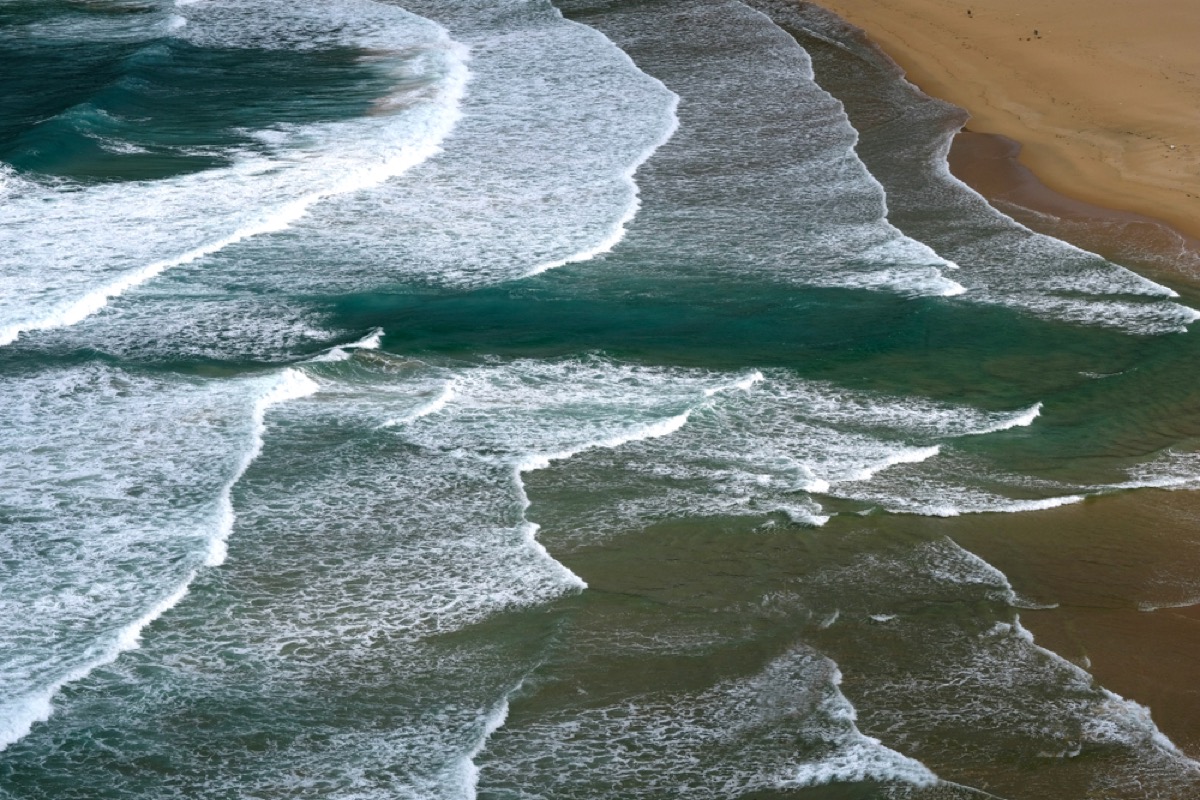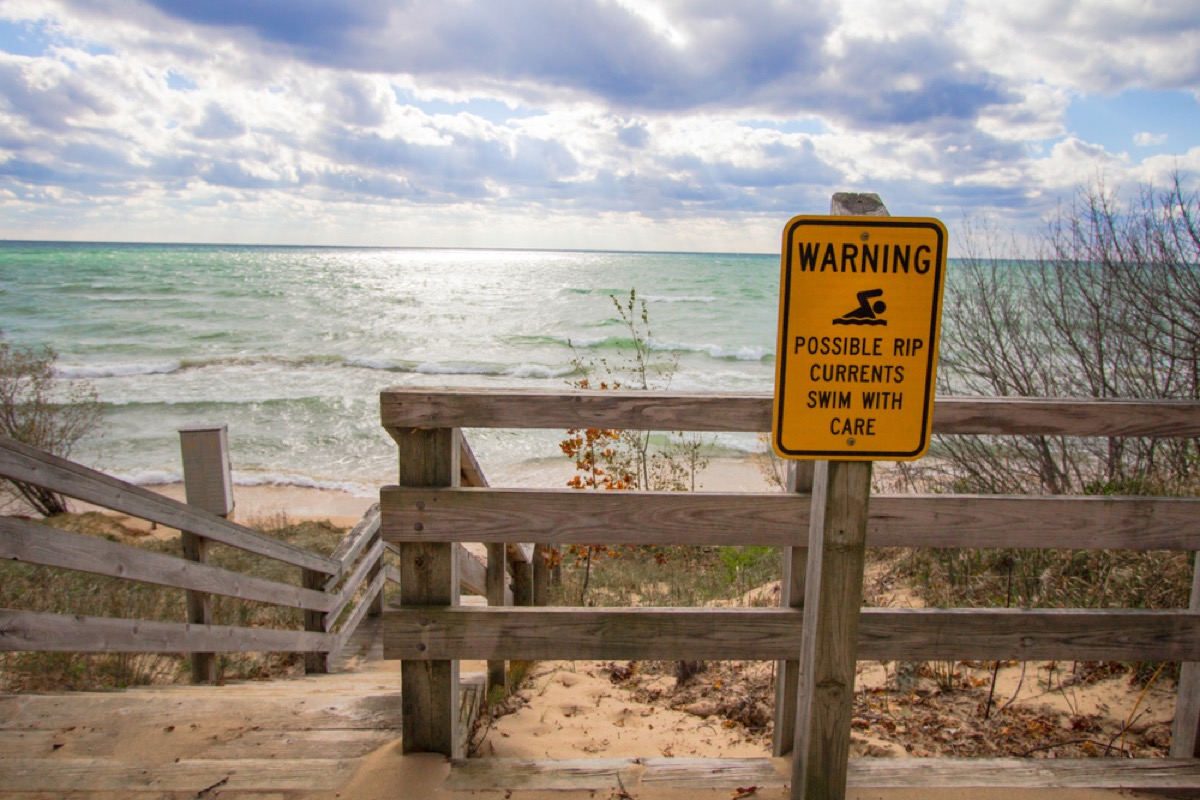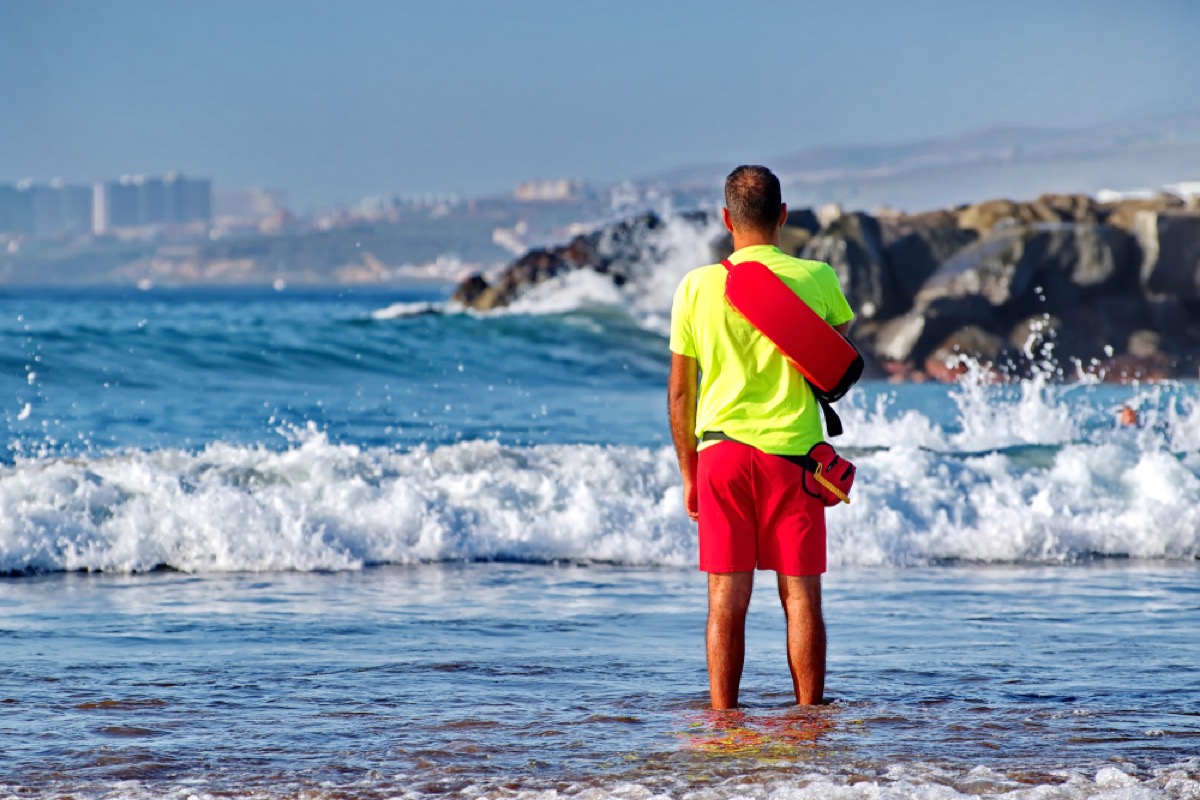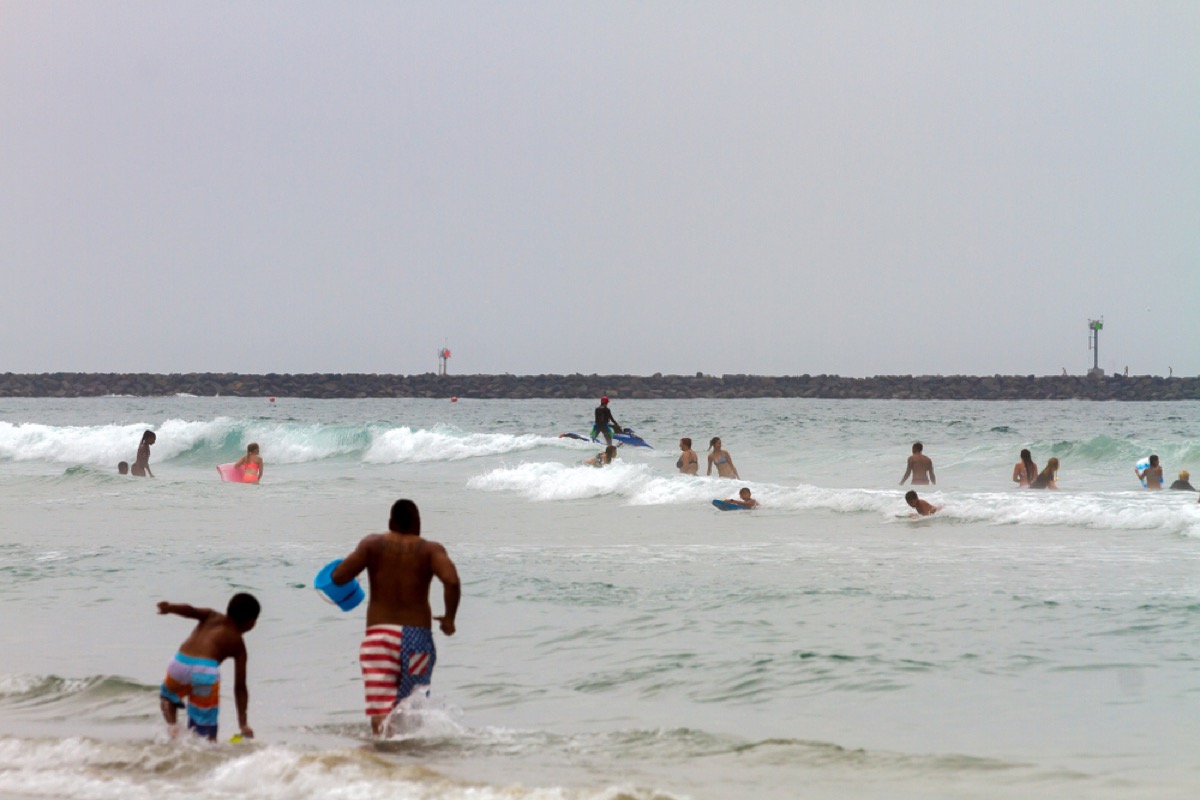If You See This at the Beach, Don’t Go in the Water, Experts Warn

Nothing defines summer quite like a trip to the beach. And while it’s not summer yet, rising temperatures across the U.S. have many people already heading to sandy shores. But if you’re planning a beach outing in the near future, there are some major safety precautions you need to know about beyond just packing sunscreen: Even the strongest swimmers should heed warnings about the dangers lurking in the ocean. In fact, experts say that if you see signs of one particular hazard in the water, you should hold off on going in—and no, we’re not talking about shark fins.
RELATED: Never Go in a Lake If You See This One Thing, Local Officials Warn.
If you see signs of a rip current, don’t go in the ocean.

A rip current is simply a current that pulls you away from the shore, but anyone who has ever been caught in one knows that the reality is a lot scarier than that. To keep yourself safe, look out for any signs of a rip current before going into the ocean. According to Australia’s ABC News, these include darker colored water, fewer waves, and a rippled surface surrounded by smoother water. Per the United States Lifesaving Association (USLA), you should also pay attention to “churning, choppy water” and “a line of foam, seaweed or debris moving seaward.”
As the USLA notes, rip currents can change speeds without warning, and they have the capacity to drag even experienced swimmers far from the safety of the shore. A 2019 report published in Natural Hazards and Earth System Sciences found that there are over 100 deaths in the U.S. every year caused by rip currents, and 80 percent of lifeguard rescues relate to this water phenomenon, the USLA says.
The organization puts it simply: “If in doubt, don’t go out.”
RELATED: 33 Mind-Blowing Facts About the Earth’s Oceans.
Don’t panic if you’re caught in a rip current.

If you find yourself caught in a rip current, your instinct might be to panic, but that’s the worst thing you can do. The U.S. National Park Service (NPS) advises that you should stay calm and not try to swim against the current. Instead, you should swim parallel to the shoreline to try to extricate yourself. Remember that as frightening as it can be to feel yourself being pulled out to sea, the current won’t pull you under because your body is buoyant, ABC News notes.
Per the NPS, if you cannot swim your way out of the rip current, tread water and wait for the current to subside, then swim at an angle toward the shore. And don’t be afraid to call out for help by facing the shore, waving your hands, and letting people know you’re in distress.
Know how to help if you see someone else caught in a rip current.

Do not try to be a hero—at least not without thinking it through. If you see someone else caught in a rip current and signaling for help, you shouldn’t simply swim toward them. “Don’t become a victim while trying to help someone else!” the USLA cautions. “Many people have died trying to rescue rip current victims.” Let a lifeguard know that there is a person in need of help. No one should enter the water without proper training and a flotation device, according to Water Safety USA.
You can also help from a distance by throwing something that floats to the person caught in the rip current, the NPS recommends. And if there is no lifeguard present, the NPS says you should shout guidance on how to escape a rip current to the person in distress, and call 911.
RELATED: For more essential safety advice delivered straight to your inbox, sign up for our daily newsletter.
Make sure you’re aware of other water safety tips to prevent accidental drowning.

Of course, rip currents aren’t the only potential dangers that could derail a beach trip. The point isn’t to be scared, but to make sure you’re as prepared as you can be. In their guide to swim area safety, Water Safety USA recommends paying attention to water depth, noting that “depths approaching chin height or greater pose significant risk to weak or nonswimmers who have not learned to support themselves in deep water.” They also suggest looking out for underwater hazards, like rocks, debris, and sudden drop-offs.
The Centers for Disease Control and Prevention (CDC) provided Fox 59 with more tips on staying safe while swimming, which goes for the ocean but also lakes, rivers, pools, and any other bodies of water. These include using a buddy system, avoiding alcohol, not using foam or inflatable toys as a substitute for life jackets, and learning CPR in case you need to use it during an emergency.
RELATED: 17 Disturbing Health Dangers Lurking in Your Backyard.